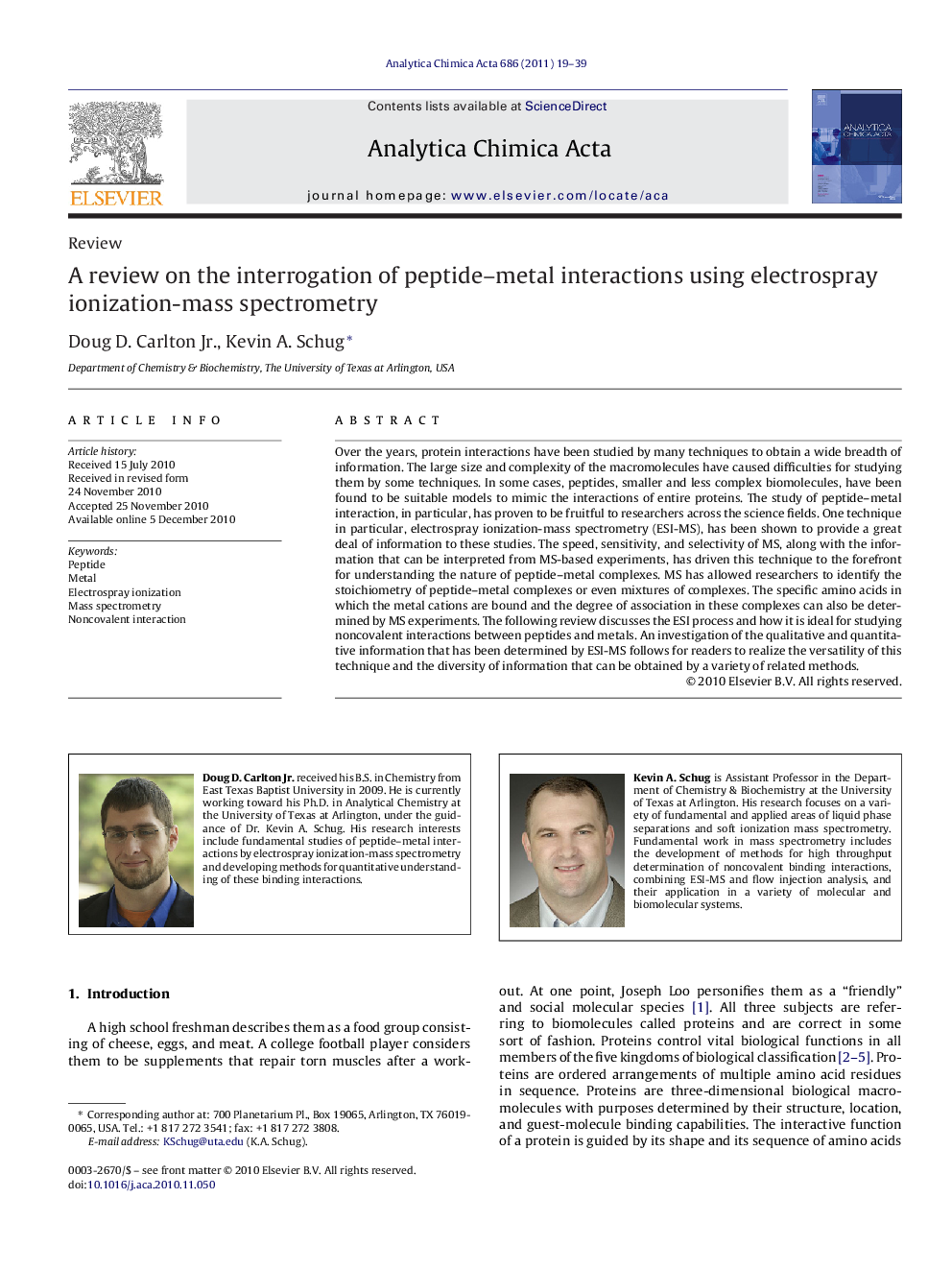| Article ID | Journal | Published Year | Pages | File Type |
|---|---|---|---|---|
| 1167204 | Analytica Chimica Acta | 2011 | 21 Pages |
Over the years, protein interactions have been studied by many techniques to obtain a wide breadth of information. The large size and complexity of the macromolecules have caused difficulties for studying them by some techniques. In some cases, peptides, smaller and less complex biomolecules, have been found to be suitable models to mimic the interactions of entire proteins. The study of peptide–metal interaction, in particular, has proven to be fruitful to researchers across the science fields. One technique in particular, electrospray ionization-mass spectrometry (ESI-MS), has been shown to provide a great deal of information to these studies. The speed, sensitivity, and selectivity of MS, along with the information that can be interpreted from MS-based experiments, has driven this technique to the forefront for understanding the nature of peptide–metal complexes. MS has allowed researchers to identify the stoichiometry of peptide–metal complexes or even mixtures of complexes. The specific amino acids in which the metal cations are bound and the degree of association in these complexes can also be determined by MS experiments. The following review discusses the ESI process and how it is ideal for studying noncovalent interactions between peptides and metals. An investigation of the qualitative and quantitative information that has been determined by ESI-MS follows for readers to realize the versatility of this technique and the diversity of information that can be obtained by a variety of related methods.
